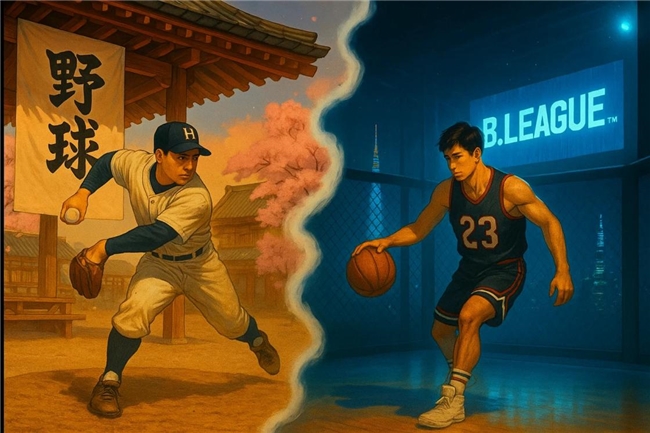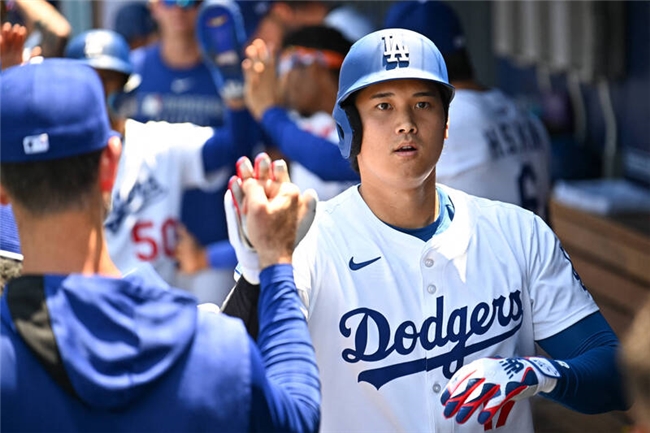How did Japan transform from a strong regional contender into a global sports powerhouse in just a few years?
At the 2021 Tokyo Olympics, Japanese athletes won a total of 58 medals, including 27 gold medals, setting a new record for the country. Following that, at the 2024 Paris Olympics, they secured 45 medals across 16 major events, including judo, swimming, and shooting. These achievements solidify Japan's position as a leading sports powerhouse in Asia.
The secret behind this success is Japan’s embrace of the American sports system and business model, especially in baseball and basketball, now key drivers of its rise.


From Borrowed Sport to National Obsession
In the final moments of the 2023 World Baseball Classic, Shohei Ohtani struck out Mike Trout with a 100 mph fastball, sealing Japan’s 3–2 victory over the United States. How did Japan reach the point where it could produce such iconic moments?
American sports have left a profound and lasting mark on Japan. Baseball arrived in the late 19th century, and in 1896 the First Higher School (Ichiko) defeated a foreign team. This victory ignited nationwide enthusiasm and spurred its spread in schools. The Nippon Professional Baseball (NPB) – Japan’s top professional baseball league, founded in 1950, was modeled on the American system.
During the Meiji period, as Japan introduced Western-style education, baseball and basketball were added to school curricula. Over time, they took deep root and developed a culture of their own. In baseball, the intense pitcher and batter duel was likened to the martial arts philosophy of “mind, technique, and body.” Iconic events such as the High School Koshien Tournament emerged, carrying national emotion and creating a deeply ingrained “baseball ecosystem.”
Moreover, baseball and basketball have deeply integrated into Japanese popular culture, evolving into highly influential cultural symbols. Numerous films and TV shows have taken them as themes, such as the phenomenon-level manga works Kuroko's Basketball (黒子のバスケ) and Slam Dunk (スラムダンク) igniting a nationwide basketball craze. These cultural products have significantly expanded the influence of baseball and basketball among young people and even led to cultural exports abroad.
How U.S. Models Transformed Japan’s Baseball and Basketball
To enhance competitive levels and league influence, Japan first implemented reforms at the institutional level, addressing issues such as the NPB's unreasonable injury management system, the rigid seniority-based hierarchy, and the fragmented league structure and disrupted player development pathways in basketball. In 2023, Japan's men's basketball team defeated European powerhouses at the World Cup and secured a direct qualification spot for the Paris Olympics, a clear manifestation of the benefits of these reforms.
Much of this progress came from adopting elements of the American system. The Japan Basketball Association actively supports players competing overseas, believing the experience strengthens their game, and monitors their progress through regular assessments. Today, Japan has two players in the NBA, one in France’s top league, and several in NCAA Division I. Rui Hachimura, the first Japanese NBA Draft lottery pick, has become a key contributor to his team. The B.League has also formed a strategic partnership with the NBA, bringing in salary caps, draft systems, and foreign head coaches to balance competition and raise technical standards. Yuta Watanabe described the collaboration as a chance to “elevate Japanese basketball to a new level” and expressed hope to see more Japanese players in the NBA. The league’s target is to develop five NBA-caliber players by 2030, and it now ranks second in the world by scale and commercial strength, benchmarking itself against Europe’s top clubs.
Baseball has followed a similar path. Since 1998, the Nippon Professional Baseball (NPB) league has operated a posting system modeled on Major League Baseball (MLB), enabling stars like Ichiro Suzuki to join U.S. teams—his 2001 move to the Seattle Mariners came with a three-year, $14 million contract. The system opened doors for more Japanese players abroad while accelerating the domestic league’s marketization, prompting clubs to build professional scouting and negotiation teams. On the training side, players have imported U.S. programs such as Driveline, boosting pitching velocity, control, and injury prevention. These innovations have strengthened team performance and advanced the league’s systematic use of modern sports technology.

The Star Effect and Its Echoes
The draft system has given young talents a direct path from youth leagues to the world stage. Shohei Ohtani is the standout example. He first gained attention at Hanamaki East High School for his remarkable two-way performance in the Koshien Tournament. After joining the Hokkaido Nippon-Ham Fighters in the NPB, he became a league sensation and later moved to Major League Baseball (MLB), where he won the American League MVP award twice as a historic two-way player for the Los Angeles Angels.

Japan’s top athletes have also embraced U.S. training innovations, further enhancing their performance. Ohtani, for instance, trained at the Driveline Center in the United States, focusing on pitching velocity, spin rate, and injury prevention. His fastball exceeded 100 mph (161 km/h) after the program, helping him excel in both pitching and batting. In the 2023 World Baseball Classic (WBC) final, he struck out Mike Trout to secure Japan’s 3–2 victory.
Basketball and Baseball Lead the Sports Industry
Institutional reforms and the star effect have worked in tandem, propelling Japanese baseball and basketball to the forefront of Asia and beyond. Japan has won the WBC three times—2006, 2009, and 2023—beating the United States in the latest final. In basketball, the national team’s sharp execution on the FIBA stage in 2023, especially in clutch moments, has drawn global attention.
Japan’s sports industry is expanding alongside its competitive success. In 2020, sports associations generated nearly 974 billion yen, about 2% of GDP. The NPB drew a record 26 million fans in 2024, averaging 31,132 per game. The 2025 Tokyo Series with MLB averaged 12.1 million viewers per game, saw sponsorship revenue climb 114% year-on-year, and generated $40 million for MLB—an all-time high for its international events.

Japan’s sustained progress stems from studying, adapting, and innovating on the American professional system, commercial operations, and sports science. While inspired by U.S. methods, Japan’s baseball training emphasizes teamwork and discipline, diverging from America’s focus on individual prowess. This collectivist approach fits Japan’s cultural context and offsets physical disadvantages through tactics. The fusion of imported sports with local values has not only elevated Japan’s competitive level but also embedded sportsmanship deeply into society.
By Iven Zhao
Published August 8, 2025






